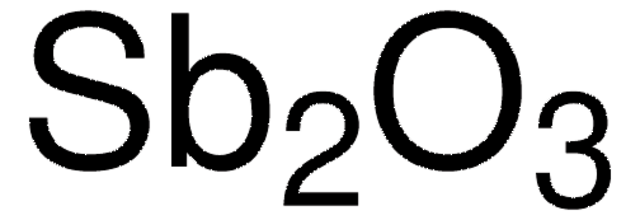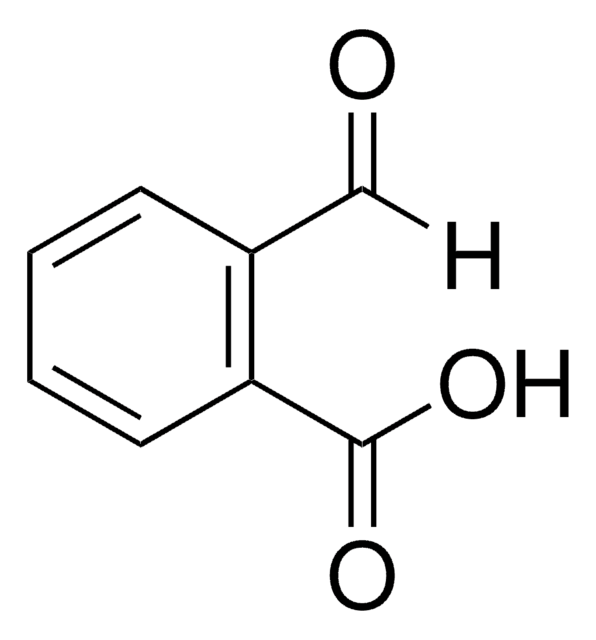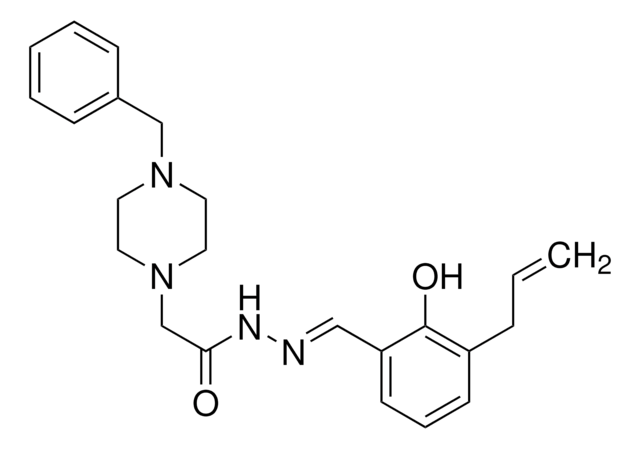Wichtige Dokumente
229393
Aluminiumchlorid Hydrat
99.999% trace metals basis
Synonym(e):
Aluminium trichloride hydrate, Aluminum(3+) trichloride hydrate, Trichloroaluminum hydrate
About This Item
Empfohlene Produkte
Dampfdruck
1 mmHg ( 100 °C)
Qualitätsniveau
Assay
99.999% trace metals basis
Form
crystalline
Zusammensetzung
Degree of hydration, 6-7
Eignung der Reaktion
reagent type: catalyst
core: aluminum
Verunreinigungen
≤15.0 ppm Trace Metal Analysis
mp (Schmelzpunkt)
100 °C (dec.) (lit.)
Dichte
2.398 g/mL at 25 °C (lit.)
Anwendung(en)
battery manufacturing
SMILES String
[H]O[H].Cl[Al](Cl)Cl
InChI
1S/Al.3ClH.H2O/h;3*1H;1H2/q+3;;;;/p-3
InChIKey
CAYKLJBSARHIDI-UHFFFAOYSA-K
Allgemeine Beschreibung
Anwendung
- Ausgangsstoff bei der Synthese von Aluminiumoxid-Aerogelen mit großer Oberfläche mittels Sol-Gel-Prozess
- Katalysator für die Friedel-Crafts- Alkylierung von Indolen
- Dotierstoff bei der Herstellung von Al-dotierten ZnO-Dünnschichten mittels Ultraschall-Sprühpyrolyse
- Ausgangsmaterial bei der Synthese von Böhmit-Nanopartikeln mit kontrollierterMorphologie
Signalwort
Danger
H-Sätze
Gefahreneinstufungen
Skin Corr. 1B
Lagerklassenschlüssel
8A - Combustible corrosive hazardous materials
WGK
WGK 1
Flammpunkt (°F)
Not applicable
Flammpunkt (°C)
Not applicable
Hier finden Sie alle aktuellen Versionen:
Besitzen Sie dieses Produkt bereits?
In der Dokumentenbibliothek finden Sie die Dokumentation zu den Produkten, die Sie kürzlich erworben haben.
Kunden haben sich ebenfalls angesehen
Unser Team von Wissenschaftlern verfügt über Erfahrung in allen Forschungsbereichen einschließlich Life Science, Materialwissenschaften, chemischer Synthese, Chromatographie, Analytik und vielen mehr..
Setzen Sie sich mit dem technischen Dienst in Verbindung.







